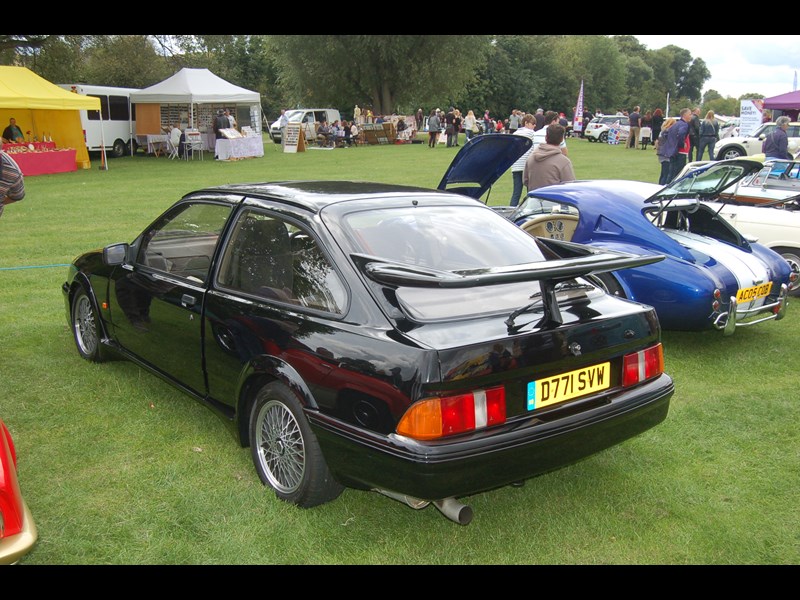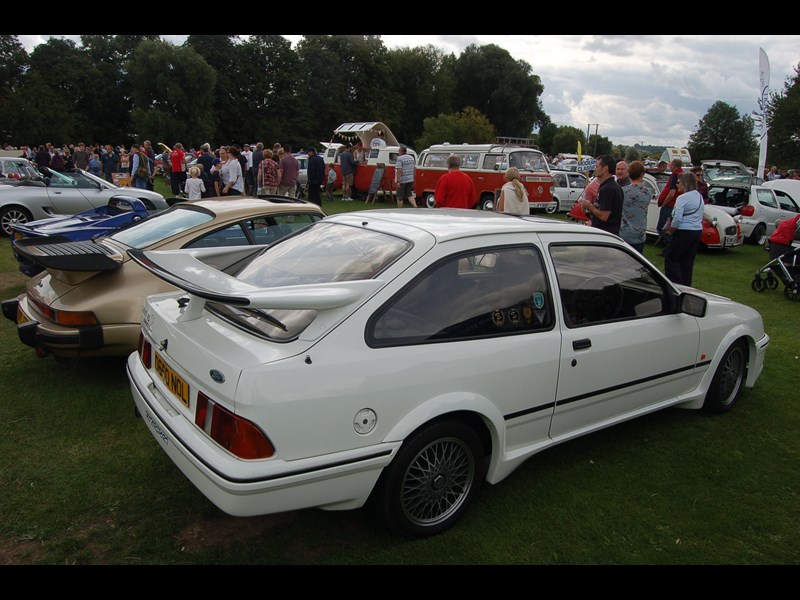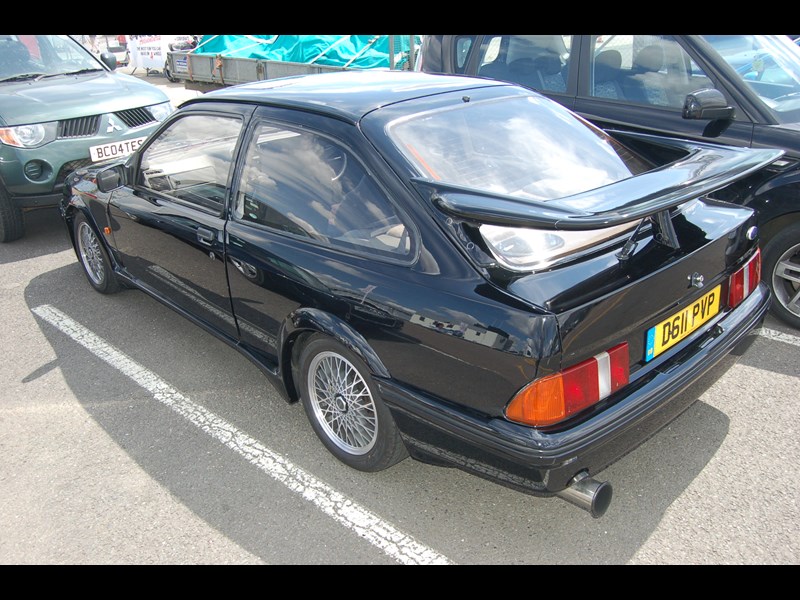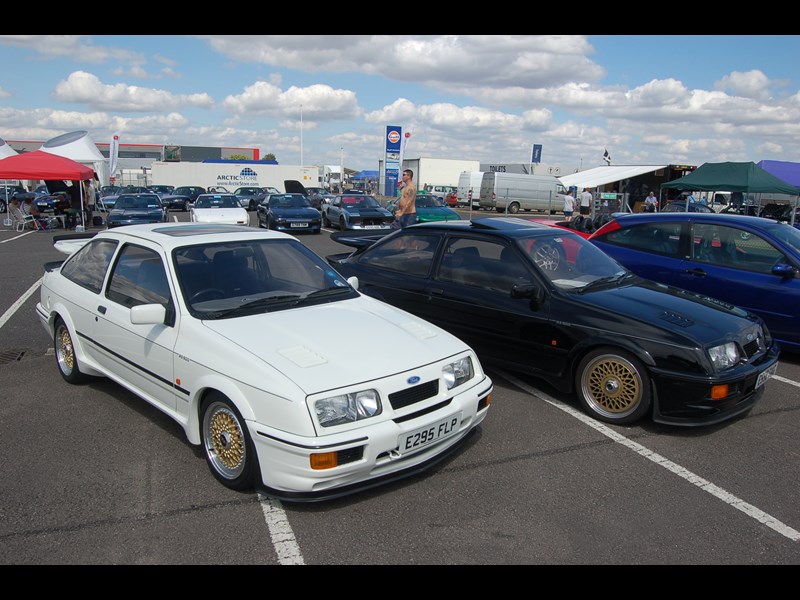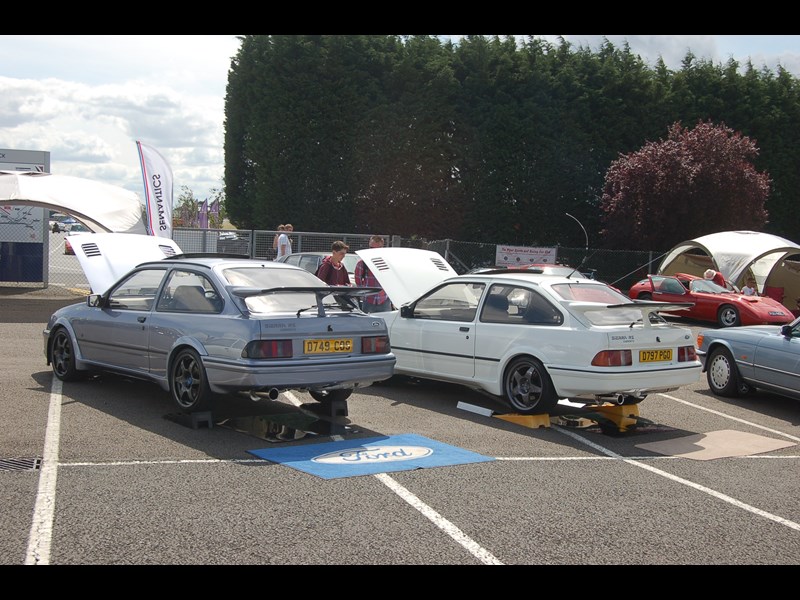
Classic Ford Sierra Review
When it came time to replace the ever popular Cortina in 1982 the Ford Sierra's aerodynamic styling was ahead of its time and a bit of a shock to the more conservative Ford buyers.
But that modern styling meant that during ten years of production the car remained looking current while other marques' offerings of the time quickly began to look dated. Ford offered the Sierra in a mind-boggling variety of engine sizes, from humble 1.3L to 2.9i V6 and RS Cosworth. Body styles varied from 3-door hatchback to 5-door estate and even a pickup. Transmissions were 3 and 4 speed automatics and 4 and 5 speed manuals. A range that offered something for everyone from families to racers and, probably most importantly for the success of the model, fleet buyers. As fleet cars they put in many hard miles at the hand of reps and business drivers, so low-mileage cars are very hard to come by these days, but they can be found.
Sierras were built for easy servicing and low running costs so parts are readily available but be aware that parts for the 4x4 and rear-wheel drive models are not interchangeable, nor between the four and six-cylinder models.
A car that was once seen in its thousands up and down the motorways of Britain is now becoming scarce and to the surprise of many good, low mileage, examples are beginning to change hands for surprising sums. However, it is the wild touring car racer for the road RS Cosworth that attracts the most money. Fancy one yourself? You'd better read our guide below.
VITAL STATISTICS
1986 RS Cosworth
Engine 1993cc/4-cyl/DOHC
Power 201bhp@6000rpm
Torque 204lb ft@4500rpm
Top Speed 145mph
0-60mph 6sec
Economy 21mpg
Gearbox 5-speed manual
WHAT TO LOOK FOR
1 Only 500 examples of the RS500 were made, so beware of replicas. Authentic examples should have larger ducts in the front bumper, while aerodynamics were improved thanks to a front splitter and extra spoiler on the tailgate. Engines should have a larger turbo and intercooler, two injectors per cylinder and larger capacity oil and water pumps. If in doubt, check the VIN plate on to the slam panel and the chassis number in the floorpan – they should match on a Cosworth, but not on an RS500.
2 You need to look out for corrosion, but it’s crash damage that’s killed most Cossies. On top of a thorough inspection of the car’s structure and panels, a HPI history check is highly recommended. Rippled inner wings or missing seam sealer should set alarm bells ringing, while serious corrosion most likely stems from badly repaired crash damage.
3 Other areas prone to rot include the joint where front wings meet the slam panel, under the rubber trim inside the tailgate and, oddly, behind the windscreen washer bottle in the engine bay. The double-skinned rear chassis rails, front inner wings and suspension are tricky areas to repair.
4 The twin-cam engine is unstressed when in standard tune, but most have been hotted up, so check the 330bhp safety limit hasn’t been exceeded. RS500s have a stronger cylinder block casing, so can take more power without failing.
5Head gasket problems due to corrosion are common and end up pressurising the cooling system. Check by getting the engine up to temperature and carefully removing the header tank cap – major bubbling points to trouble. An upgraded gasket is the best option.
6 Check for play in the steering, as the rubber bush in the universal joint gets cooked by the turbo. The bushes within the track control arms aren’t up to the job either. They wear rapidly, so replacement with a set of polyurethane items is worthwhile, including the anti-roll bar mounts.
7 Many Cossies have aftermarket wheels fitted, so check there is enough inner wheelarch clearance for them. The standard brakes are decent, but will only put up with so much abuse. Judder through the pedal when braking signifies warped discs, meaning a new set will be required.
8 Most original trim parts are obsolete, so check them thoroughly. Also, the dash top can split. While repairs are possible, a new panel is often the best solution – but they’re not cheap, even if you can find one.
9 Aftermarket sound systems and alarms cause havoc with electrics if spliced into the loom without consideration. The fusebox can melt because the twin cooling fans draw up to 30 amps. Originally, a 20-amp fuse was fitted, so it’s worth fitting a beefier wiring setup.
10 Sierra gearboxes are durable, but crunching when shifting into reverse is to be expected due to a lack of synchromesh. The first sign of trouble is baulking when changing up from third to fourth, meaning the synchro rings have begun to fail. A rebuild will cost £500, with refurbed diff units slightly less.
AT THE WHEEL
You have to experience the capabilities of this car for yourself – after that you’ll be hooked. The outstanding characteristic of the turbo-equipped RS Cosworth is it’s impressively broad power band. Quite unlike earlier turbo-equipped cars, it isn’t hamstrung by lag – it produces more than 80 per cent of its maximum torque all the way from 2300rpm right upto 6500rpm – which translates into supremely useable performance out on the road.
The feeling of planting the throttle in second gear is one to be savoured, while the mid-range grunt of the engine is truly staggering – it’s a rasping, growling, buzzing old thing, about as far removed from the sanitized modern four-pots that are peddled today as you could imagine.
The RS Cosworth is raw and a bit rough round the edges then, but is an exciting drive and makes no apologies for it. You can indulge your touring car fantasies too, imagining you’re Robb Gravett on the way to a British Saloon Car Championship victory in 1990. Plus, you can still fit the family and a few bags of shopping on board. What a car!
VERDICT
Thanks to the popularity of television programmes such as Ashes To Ashes, there’s now a serious market for 1980s legends like the Sierra Cosworth. Originality is critical though and bodywork, wheels and seats need to be as close to original specification as possible. Many cars were modified almost as soon as they left the dealer’s forecourt, meaning 100 per cent factory fresh examples are now few and far between. Rising values have also seen many dubious characters jumping on the bandwagon – with plenty of fakes being passed off as the real thing. All genuine cars will feature a tilt/slide sunroof, but if you have any doubts then walk away, or consult the RS Owners’ Club for help and advice. That said, as long as you’re careful when buying, then the Cosworth is a perfomance pleaser that’s only going to appreciate in value
